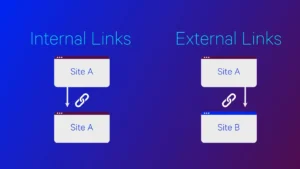The eCommerce scene is changing fast. The D2C (Direct-to-Consumer) approach where brands sell straight to end users without middlemen isn’t just a trendy term anymore: it’s a major player reshaping how we buy, sell, and think about brands. But which trends are driving D2C’s next big leap? And how can brands get on board ?
Why the D2C momentum continues
Before we explore trends let’s ground ourselves: what makes D2C such a powerful model?
- Higher margins & control over margins: By eliminating wholesalers and retailers, brands keep more profit for each unit and have more flexibility to set prices and run promotions.
- Closer customer relationship: Having ownership of all touchpoints—from product to packaging to support—allows a brand to build loyalty, collect first-party data, and customize experiences.
- Data-driven decisions & personalization: Through direct transactions, brands gain access to valuable behavioral and purchase data without relying on third parties.-
- Brand narrative & identity: D2C gives brands room to create stronger stories, carve out niche positions, and build community-focused identities without getting lost in multi-brand stores.
- Changing consumer habits: More and more people feel at ease buying straight from brands online; they now expect convenience, openness, and alignment with their values.
In India, the eCommerce market in 2024 had a value of about US$147.3 billion backed by an expected CAGR of around 18.7% up to 2028.In this context, D2C brands have expanded their market share from about 2% a few years back to 15% now.
Some predictions suggest a compound annual growth rate of around 40% for D2C segments. This growth shows that D2C is becoming essential to retail strategy in emerging markets. Worldwide, D2C is no longer just an experiment – it’s a must-have for bold digital-focused brands.
Based on broader Statista / Digital Market Outlook frameworks, digital markets are splitting into specific areas, and D2C commerce plays a key role in this digital shift.
Key D2C eCommerce Trends to Watch
Here’s what’s shaping the D2C scene right now:
- Omnichannel & “clicks + bricks” hybrid growth
Online-is giving way to omnichannel plans. D2C brands now open physical spots—pop-up shops, brand stores, experience centers—to add to their online presence, build stronger customer ties, and cut down on return hassles. In India, D2C brands grew their brick-and-mortar footprint: their chunk of retail leasing jumped from 8% in H1 2024 to 18% in H1 2025.
This growth has an impact on brand awareness, hands-on marketing, and building customer confidence (shoppers can examine products before buying). The key idea: D2C companies no longer think “online only”—they think “online first, but all channels always.”
2. Extreme customization & AI/ML on a large scale
Shoppers want experiences made just for them — not generic messages that fit everyone. AI/ML is driving:
- Custom product suggestions
- Flexible pricing (based on user info, market demand, quantity)
- Smart restocking and stock control
- Chatbots / digital helpers to provide unique support
Research papers (for example,a survey in Hungary) show that trust plays a crucial role in people accepting AI for shopping, and how useful people find it matters more than how easy it is to use.
This means companies need to strike a balance between using machines and showing they care about customers, while being open about what they’re doing (for example saying “AI picked this for you” instead of pushing things on people without explaining).
3. Subscription & recurring revenue models
Many D2C brands are moving away from selling things just once to models where people sign up or get things refilled (think makeup, bathroom stuff, food, health products). This makes money come in more , helps keep customers around, and evens out the ups and downs that come with different seasons.Brands that offer subscriptions can also boost lifetime value (LTV) , secure repeat purchases, and cut reliance on new customer acquisition (which costs more).
4. Sustainability, ethics & transparency as basic requirements
Shoppers younger groups want more than just products—they seek purpose, values, and responsibility:
- Clear ingredient sourcing
- Carbon footprint reports
- Packaging you can recycle or reuse
- Claims about ethical labor (fair trade humane manufacturing)
- Circular economy approaches (refill, reuse, take-back)
This isn’t a premium feature anymore—brands might face harsh judgment if they lack it. Doing greenwashing risks customer pushback.
5.Micro and niche D2C brands
Catch on Small-scale brands targeting specific markets—like curly hair products, sexual health items, unique pet supplies, and specialized supplements—are succeeding. These tiny D2C companies can build devoted fan bases, stay flexible, and sidestep direct rivalry with big established firms.
In India, reports indicate that speedy delivery services and specialized D2C brands are growing faster in smaller cities across various sectors such as intimacy, hair care, fitness, and more.
6. Quick commerce & super-fast delivery integration
Customers now expect faster deliveries.D2C brands have partnerships with quick commerce (q-commerce) platforms or build micro-fulfillment near demand zones to provide same-day or 90-minute delivery. This has a need for smarter logistics, distributed inventory, and technology to coordinate fast fulfillment without reducing profits.
7. Social commerce live shopping & shoppable content
D2C brands now sell through social platforms and change content into commerce: – Live shopping (on Instagram, TikTok, etc.- In-app checkout & shopping stickers
- Shoppable video / UGC
- Influencer-led catalog drops
In the UK, a Retail Economics report discovered that 76% of consumers intend to buy through social media in 2025, but 46% of retailers offer direct social commerce. This gap gives D2C brands a chance to lead the social sales pipeline.
8.Privacy-first & first-party data strategies
As cookies and third-party tracking face threats (rules getting stricter, browsers putting limits), D2C brands need to switch to collecting first-party data (how people use their site, what they buy, what they subscribe to, their emails, and loyalty programs). This data turns into gold to group customers, make things personal, and keep them coming back. At the same time, it’s key to be clear about how data is used, ask for permission in marketing, and build trust.
9. Augmented reality (AR) & immersive shopping
In areas like fashion eyewear, beauty, and furniture, AR and virtual try-on features let customers “test” products without being there in person.As tech gets better and phones get stronger, AR is no longer just a cool trick but something people expect. When companies use AR well, they can cut down on returns and boost sales.
10. Selling to customers across borders and growing worldwide
After a brand succeeds at home, those selling straight to customers are looking to sell in other countries. This helps spread risk, reach new people, and grow bigger. But it’s not easy: there’s customs making things fit each place, shipping, money exchange, and following different rules. As the people behind these brands think , it’s more common to grow beyond just one area.
How to Use These Trends: Tips for Your Plan
Knowing what’s happening is just the start.Putting ideas into action is a different story. Here are some key tips:
- Segment early & Don’t try to please everyone: Create main customer profiles, small groups, and specific communities. Use data to improve these groups as time goes on.
- Invest in core tech / API-first stack: Use flexible growable systems (headless commerce, mix-and-match structure) so you can add new channels (AR live shopping small-scale delivery) without big rewrites.
- Experiment fast & iterate Use A/B testing, step-by-step launches (like trying AR with a small group), test subscription plans for certain products.Fail small, learn fast.
- Balance CAC & retention Getting new customers costs a lot; pay attention to keeping them too boosting their lifetime value through subscriptions, rewards programs, and staying in touch after they buy.
- Team up with partners & use a micro-fulfillment network: To deliver , join forces with local hubs, hidden stores, or small warehouses instead of building everything yourself at first.
- Link content to sales: Make videos, user-generated content, and helpful articles that lead to sales. The point where you ask for a purchase should feel natural, not pushy.
- Be open & tell your brand’s story: Start with your narrative.On packaging, site, and campaigns, tell people about where you get your ingredients, what you want to do for the environment, and stories about who started the company. This honesty can make customers feel close to you.
- Make it local when selling abroad If you’re growing, change the language, how people pay, how you ship things, and follow local rules. What people buy in one place might not be popular somewhere else.
- Making returns and sending stuff back is easy: Fast delivery is great—but easy returns are a must. Having a good system to handle returns clear rules, and making it simple for customers builds trust.
- Use your data and community to stay ahead: Be smart with the information you collect—don’t just use it to sell right now, but to guess what might happen, see who might stop buying, and to bring people together (like in online groups, with brand fans, and reward programs)
Metrics & KPIs to Track
To figure out if your D2C approach is effective, you need to measure it .Key metrics include:
- Customer Acquisition Cost (CAC)
- Lifetime Value (LTV)
- Churn rate / retention rate
- Repeat purchase rate
- Subscription metrics (MRR ARR retention)
- Average Order Value (AOV)
- Return rate
- On-time delivery rate
- Fulfillment cost per order
- Gross margin / net margin
- Engagement metrics (email open rates, click-throughs, loyalty program engagement)
- Channel ROI (which acquisition channels deliver best profit)
- Community metrics (referral rate, UGC volume, brand advocacy)
Tracking these over cohorts (by month, by segment) gives clarity and helps to prioritize investment.
Challenges & Pitfalls to Watch Out For
- Logistics & returns squeeze margins: Quick shipping and easy returns can eat into profits if not managed well.
- Growing too fast strains systems: Expansion is appealing, but tech, shipping, and customer help need to keep up.
- Overusing paid ads creates risk: What happens if ad prices jump? Without keeping customers and natural growth, you’re in a tight spot.
- Data rules pose threats: Be careful how you handle personal info, cookies, and tracking limits.
- Brand message gets fuzzy: As you add more product types, stick to your main brand story.
- Channel conflict in omnichannel expansion: Finding the right balance for prices, stock, and customer experience between online and physical stores
Why D2C Trends Matter
For brands and entrepreneurs, these changing trends highlight a shift: brands that can control the entire consumer funnel are gaining more power. For customers, D2C offers more options, openness, and closeness (brands that “get me”).
In crowded product markets unique experiences, reliability, and brand stories become the main focus more than just features. As attention becomes harder to grab, D2C brands that can share compelling stories, use data , and deliver will come out on top.
Why Choose Modifyed Digital
If you want to ride the D2C wave well, agencies that focus on digital strategy can make or break your success. Modifyed Digital is a partner that combines creativity, data-driven methods, and the ability to execute to help D2C brands grow.
At Modifyed Digital, we know each brand stands out. Our services include:
- Full-stack D2C strategy: From how you position yourself and define your niche to choosing channels and dividing up customers
- Acquisition & growth marketing: We know a lot about paid campaigns (Meta, Google TikTok), funnels led by influencers, partnerships with affiliates, and media that performs well
- Retention & automation: Creating loyalty programs, setting up email/SMS sequences making subscription funnels better, and marketing throughout the customer’s journey
- Tech & infrastructure: Building unique online store systems (headless, mix-and-match) connecting different tools working with APIs, and setting up systems that can grow
- Creative & content: Telling brand stories, running campaigns with user-made content, making video ads, and creating content for selling on social media
- Analytics & optimization: Understanding groups of customers, predicting how much customers will spend over time boosting sales, and making data easy to understand with dashboards
We team up with D2C brands at every point—whether you’re just starting out or growing worldwide—bringing both big-picture thinking and hands-on skills. With Modifyed Digital, your D2C brand isn’t just another customer; it becomes our ally in expansion.
We value openness, return on investment responsibility, and creating lasting brand advantages (not quick fixes). If you want to look into how we can design your D2C growth plan or check your current sales process, I’d be happy to help you move forward.
FAQs
Q1: Can D2C work for big markets, or is it just for small specialized brands?
It can grow to serve big markets—but there are some things to keep in mind. Many big brands started out selling to customers (like Warby Parker, Allbirds, Glossier). But to get bigger, companies need to spend a lot on shipping, making sure they have enough products, using machines to help customers, and often selling in different ways (stores online marketplaces).
Q2: How do D2C brands reduce customer acquisition cost (CAC)?
Bringing down CAC requires several approaches: boosting organic/SEO traffic, using content marketing and storytelling (turning the brand into a media outlet), building communities and starting referral programs, teaming up with influencers while keeping a close eye on ROI using retargeting & email marketing, and zeroing in on retention to lessen the need for new customers.
Q3: What’s the role of subscription models in D2C? Are they applicable to all product types?
Subscriptions help steady income, keep customers, and increase their long-term value. But they work best for things people use up or need to buy again (like makeup, wellness stuff, pet food, and personal care items). For things that last a long time (like electronics or furniture), subscriptions might not make sense on their own. But you can add extras, services, warranties, or things people use up to make it work.
Q4: How should a D2C brand approach returns and reverse logistics?
Returns hit the bottom line hard. To keep them in check, brands need clear fair return policies, smart use of prepaid return labels, and team-ups with local drop-off spots. Quick inspection of returned items is key, along with fixing up or reselling when possible. It’s also smart to use data to spot risky orders, pack things better to avoid damage, and give folks reasons to keep stuff (like store credit or swaps) instead of sending it back.
Also Read:
What does Performance Planner Automatically do
Top 10 Social Media Marketing Agencies in India
How to Optimize Real Estate Listings for SEO with Strategy
Best Real Estate keywords For Google Ranking To Boost Leads






